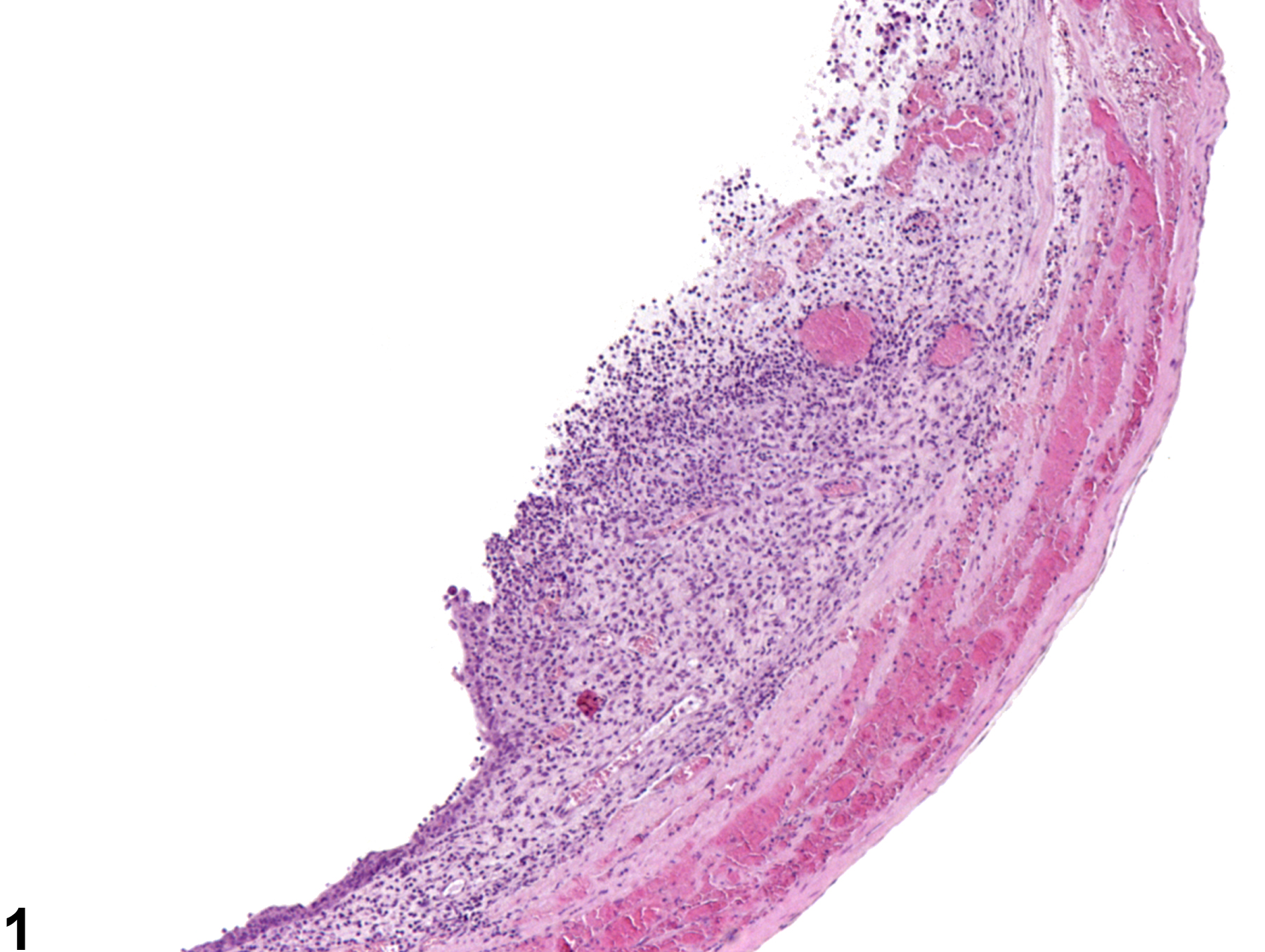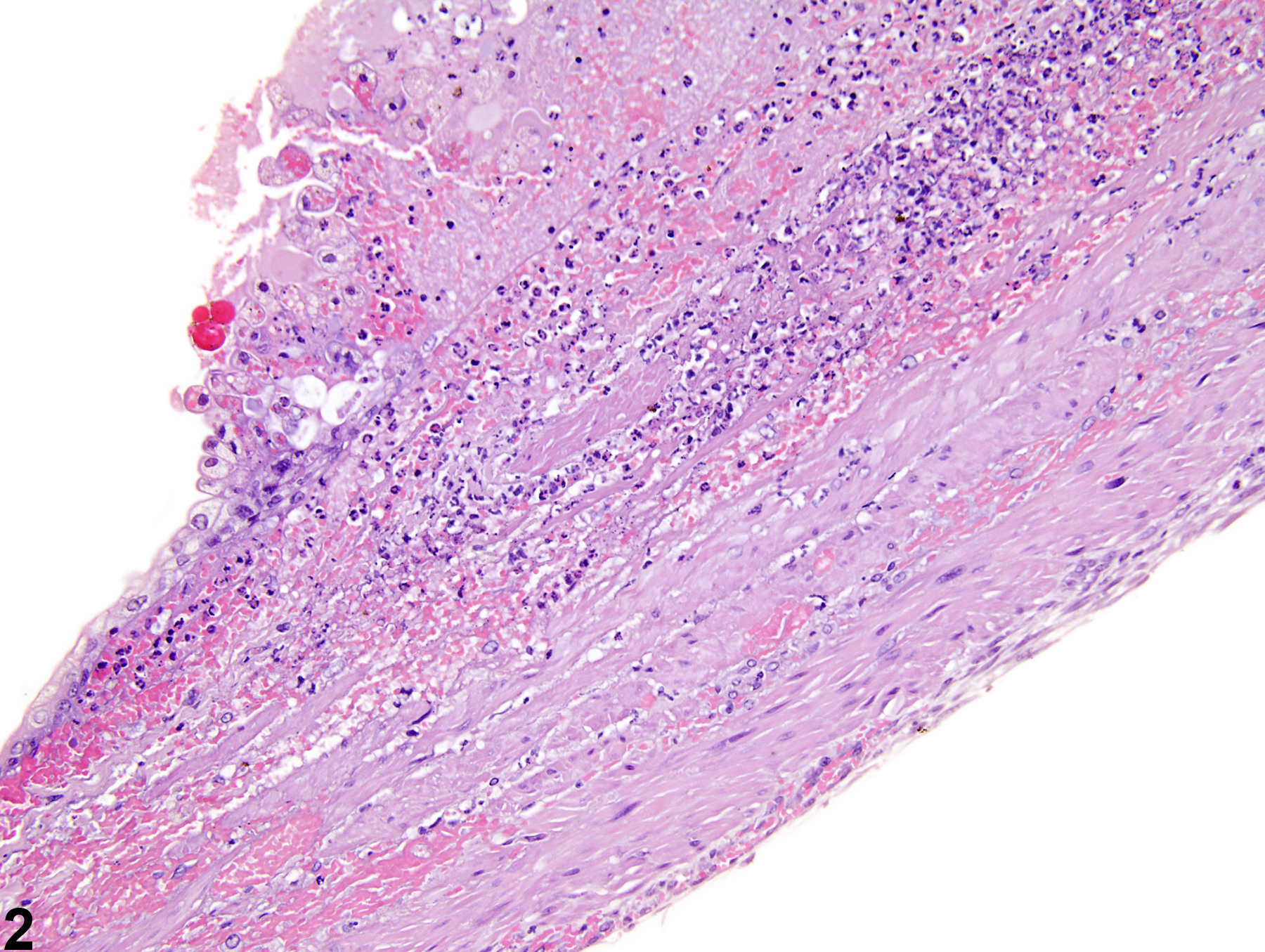Urinary System
Urinary Bladder - Ulcer
Narrative
Gopinath C, Prentice DE, Lewis DJ. 1987. The urinary system. In: Atlas of Experimental Toxicologic Pathology. Current Histopathology Vol. 13. MTP Press, Norwell, MA, 78.
Abstract: http://onlinelibrary.wiley.com/doi/10.1002/path.1711550414/abstract
A focal ulcer of the urothelium, with inflammation of the underlying submucosa and muscularis layers, from a male B6C3F1 mouse in a chronic study.



